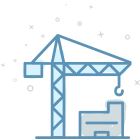Don’t look now, but spring is sneaking up on us. And, the good news is Punxsutawney Phil recently predicted an early spring. The bad news; most of us haven’t even begun to think about the maintenance our buildings will need, let alone start planning for it.
As we get ready to shake off winter, it’s time to start strategizing your plan for spring. You know how busy the spring months can get; contending with storm damage, dirt, and general wear and tear. Now is the time to plan to make sure maintenance is scheduled, equipment is ordered and your team is ready.
To help get you started we’ve listed our top 10 things to do now, so you’ll be prepared for spring.
Conduct a full facility check
This task really isn’t just for spring, but should be done each season to benchmark and stay on top of the state of your facility. This is the time to think ahead and anticipate potential problems before they emerge. Create a master project list and prioritize your needs according to weather and timing (i.e. times when the building might be less occupied). Give special attention to areas hardest hit by winter.
Check, service and repair equipment
Make sure equipment not used during the winter is in good and safe working order. Do spot repairs on equipment that you maintain and schedule any needed maintenance. Now is also the time to order equipment with long lead times, as well as ensure you have inventory of parts, such as air filters, on hand in time.
Do spot repairs
As you conduct your facility check, make note of smaller items and minor damage that you can do a spot repair on now to catch small problems now, before they become big ones. This will help prevent a minor issue from escalating into a larger, more expensive repair or emergency.
Test and Condition Air Conditioning Units
It may seem too early to turn on your AC, but now, before the weather starts heating up, is the time to give your A/C units a check-up. Chances are your units have been sitting idle all winter, gathering dirt and dust. You’ll want to make sure to perform regular maintenance on the filters, coils and fins, and run tests to make sure they are in good working order and running efficiently. Getting ahead on your A/C units will keep tenants happy this spring and summer.
Develop a strategy
Take the time to go through your “to do” list and prioritize your projects. Pinpoint problem areas, and identify “must-haves” and “wish-list” items. Prioritizing and scheduling projects based on needs will allow you to focus your resources more effectively.
Freshen up first impressions
Take the time to spruce up your interior entrances where your business makes its first impression. Eliminate clutter and deep clean floors that may have had mud and snow tracked through them. Don’t forget to look up; this is also the ideal time to tackle more comprehensive cleaning; such as ceiling dusting.
While it may be too early to work outside, you can plan to spruce up your exterior appearance. Schedule outdoor maintenance, exterior pressure washing, painting and landscaping. Getting it on the calendar now will eliminate delays if you wait until the last minute to get it on the books.
Clean your windows
It may not seem like a high priority, but cleaning your windows is important for occupant comfort. Now’s the time to schedule a full window washing to get rid of winter dirt and grime (don’t forget the interiors!). You’ll be surprised how much natural light you get back. This simple measure will have a positive impact on the mood of the people in your facility as well as workplace performance.
Evaluate Technology
There are a variety of technology products available to make managing buildings easier. This is the ideal time to take stock of where your facility could benefit from technology specifically designed for facilities managers that gives them instant mobile access to important information as well as using smart technology. For example, you can use smart sensors for energy efficiency, as well as monitoring water use to determine plumbing issues. By using technology, you can reduce operating costs, increase productivity and improve your occupants’ comfort.
If you’re already using tech, investigate how to use the data gathered for predictive maintenance to forecast when a problem will occur so you can plan for and provide maintenance accordingly.
Identify cost-saving maintenance opportunities
If you aren’t already doing this, record and monitor your maintenance costs. This will give you a realistic history and documentation of where your budget, as well as staff resources, is being spent. With this knowledge, you can make informed decisions if you are on the right track or if you need to allocate your resources differently. When you look at your expenses and resources over time, you can anticipate what will be needed and identify opportunities to save.
Review safety procedures
The transition to spring is the ideal time to review your safety procedures. For example, take a look at your things like your fire escape plan and test your fire alarms, extinguishers and replace batteries in smoke detectors. Make sure your team knows where all safety equipment is located. During your walk through, review all your safety signage and ensure it is up to date and visible. This is also the time to hold safety training with your team to educate them on new procedures and remind them of current safety measures to make sure they are top of mind.
These are just some of the steps you should take this spring to ensure your business is ready for the busy months ahead. Starting the season by setting goals and following these measures is a proactive way to protect your building, keep occupants comfortable and your staff safe.





